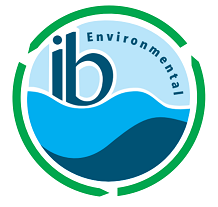How Georgia Water Utilities Can Partner On Water Stewardship For WaterFirst Designation - Part 2: What's In It For the Smaller Partners?
By Stacey Isaac Berahzer
This is the second in a series of three posts on Newton County’s joint application to WaterFirst. When the Newton County Water and Sewerage Authority applied for WaterFirst designation in 2012, the County was a partner, and so was the county seat of Covington. But there were four other municipalities involved in the joint filling too. This post looks at why the City of Oxford, with a population of only about 2,000, would agree to be involved in this process.
Oxford is a small city in Newton County. While the City is a retail distributor of water services, and provides its own wastewater service, it is so small that it does not anticipate pursuing a lot of debt for its water infrastructure. However, city leadership continues to devote many hours to long-term planning efforts regarding the community’s water resources. An important step in this process was seeking the WaterFirst designation. Because of Newton County’s Consecutive Water System, the WaterFirst application had to be a joint one. (A consecutive system is a public water system that receives some, or all, of its finished water from one or more wholesale systems. Delivery may either be through a direct connection or through the distribution system of one or more consecutive systems.) To produce a holistic approach to water management, all of the local government entities needed to be involved. In this situation, Newton County owns the reservoir and treatment plant, while the Newton County Water and Sewerage Authority (NCWSA) distributes the water to the citizens in the unincorporated areas of the county and each of the municipalities. There are nine wholesale water customers in the Newton County Consecutive Water System, as seen in Figure 1.
Figure 1: Diagram of the Newton County Consecutive Water System (image adapted from Newton County WaterFirst Designation presentation)
While some of the larger cities can see the financial benefits of WaterFirst, such as the $5 million saved by the NCWSA over the course of a $40 million loan, Oxford does not plan to borrow much. So, Oxford will not see anywhere near this level of financial benefit. However, Oxford benefits in other ways. Firstly, there is a sense of solidarity when it comes to working together with its neighbors. Newton County leaders had a community vision for building a sustainable community with water at its heart.
Apart from this solidarity, the collaboration also helps with the service delivery strategy that the County and its cities need to develop. This service delivery strategy has helped small cities like Oxford across the state to have a seat at the planning and decision-making table alongside their larger neighbors. Financially, Oxford has been able to meet a lot of its water infrastructure needs through a collaboration with the County for Special Local Option Sales Tax (SPLOST) funding. So, the collaboration does bring some less direct financial benefits to the City. Even though the City had talked about these projects, they worked on wastewater projects and water leaks by replacing a mile-long water main after the WaterFirst designation. City staff says that these were projects they had discussed before, but the WaterFirst application process provided incentive and clarity to actually complete the projects. In terms of financial benefits, small cities like Oxford also say that receiving priority for grant programs, due to having the WaterFirst designation is also an important advantage.
Oxford also benefits from all the water stewardship materials that come from the http://savewaternewton.com/ campaign. A small city would not be able to produce these videos etc. on its own budget. To demonstrate some of these water stewardship features, the new Oxford City Hall that opened in 2010 has several features that address stormwater quality directly. Figure 2 is an image of some of the vegetation in the rain garden. Runoff from the parking lot flows into this rain garden which surrounds the parking area. The water then infiltrates through layers of stone and soil, reducing soil erosion and flooding. The porous pavement for the parking areas at the site also promotes infiltration of stormwater. The under-drain system from the rain garden is collected in an underground vault, where it is stored for irrigation, contributing to water conservation.
Figure 2: Vegetation around a Rain Garden
Mutual Aid
With over 1,000 miles of pipe serving approximately 90% of Newton County, the municipalities in Newton County have an agreement in place to minimize the impact that a major leak would cause on the system. Their philosophy is that since they share the same water supply, they must work together to protect it. The agreement allows manpower, materials, and expertise to be shared among all partners, and eases financial burdens on some of the smaller partners, such as Oxford, within the consecutive system.
While Oxford received WaterFirst designation as part of a larger joint application, the next post in this series highlights how some small local governments have achieved the designation independently.
(The author thanks former Mayor of Oxford, Jerry Roseberry, for his time in being interviewed for this post.)
This is part of a blog post series funded by the Georgia Environmental Finance Authority (GEFA).
Disclaimer: The opinions of the writers should not be considered legal advice or endorsement by GEFA.
Subscribe Here
Sign up with your email address to receive notices of new blog updates. We post about once per month.


